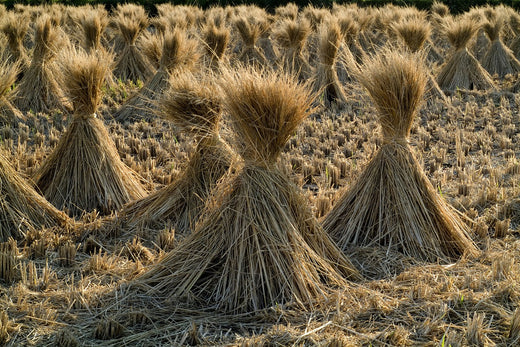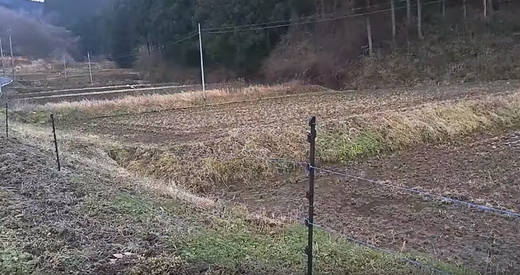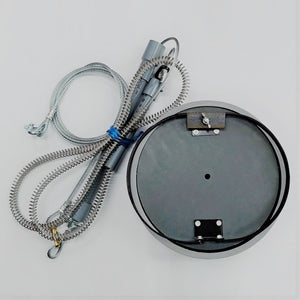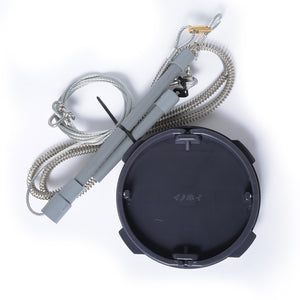In addition, deer, wild boars, and monkeys account for about 70% of the damage. Damage control measures have been taken across the country, but the factors that continue to cause damage are the expansion of wild bird and animal habitats, the decrease in hunting pressure, and the declining population and aging of the population. An increase in abandoned land has been pointed out.
Therefore, with the aim of reducing wildlife damage, the Ministry of Agriculture, Forestry and Fisheries provides subsidies to organizations that carry out projects to prevent wildlife damage.
By applying for a business plan, etc., the target group will be issued a "wildlife damage prevention comprehensive measures grant" from the national government through each prefecture.
Target group of grant
The implementation body (regional council, members of the regional council) of the wildlife damage prevention project is subject to issuance.A regional council is an organization or group consisting of local governments, agricultural cooperatives, forestry cooperatives, fishermen's cooperatives, research institutes, related organizations such as hunter groups, and village representatives. must be met.
- Appointed representative
- Having a system that can properly carry out business and accounting procedures
- Management of an organization that clarifies the method of decision-making as a council, the method of administrative processing and accounting processing and the person in charge, the method of property management, the method of managing and using official seals and the person in charge, the method of internal audit, etc. that there is a contract stating the content related to
- Mechanisms and systems are in place to prevent fraud related to administrative procedures.
Projects eligible for subsidies
Grants will be issued for the necessary expenses when implementing the following projects.1. Wildlife damage prevention support project
- Maintenance of fences (protective fences, electric fences, etc.), treatment and processing facilities for captured animals, facilities for advanced capture techniques (shooting range), etc.
- Purchasing and installation costs for capturing equipment (traps, cages, moving boxes, etc.)
- Direct support for hunting activity expenses
- Community-wide damage prevention activities such as eviction
- New technology demonstration activities using ICT, etc.
- Human resource development activities, etc.
Grant rate
A fixed amount is granted to prefectures, and the grant to the project implementation body is within 1/2 of the project cost. * Depending on the conditions, some may be issued at a fixed amount.2. Gibier Doubling Model Maintenance Project
In fiscal 2018, it will also be issued for the gibier double model maintenance project. In order to effectively utilize the captured animals as gibier, the government has set a goal of doubling the amount of gibier used in 2016 (1283 tons) by 2019.In order to realize a stable supply of gibier, we will develop human resources involved in catching, processing, and hygiene management, develop processing facilities that will serve as bases, and use mobile dismantling vehicles ( The introduction of gibier) is supported by subsidies.
Model areas selected in 2018
The following 17 districts have been selected as gibier utilization models.▽ Hokkaido Sorachi district ▽ Nagano city ▽ Ishikawa prefecture Minami Kaga district ▽ Gifu prefecture Seino branch ▽ Mie prefecture Iga city / Inabe city ▽ Kyoto prefecture / Osaka prefecture = Kyoto Tamba / Osaka Hokusetsu district Kihoku district ▽ Kozagawa town in the same prefecture ▽ Mimasaka district in Okayama prefecture ▽ Eastern region in Tottori prefecture ▽ Wide area in Tokushima prefecture ▽ Entire area in Kumamoto prefecture ▽ Entire area in Oita prefecture
Publication of project evaluation results
Received the subsidy based on the provision of Subsection 6-1-(5) of Appendices 1 of the Implementation Guidelines for Comprehensive Measures for Wildlife Damage Prevention (March 31, 2008) Evaluation results will be published for projects that have been approved.This evaluation is a self-assessment of the achievement status of the goals set in the wildlife damage prevention plan by the project implementing body that implemented the wildlife damage prevention comprehensive measures subsidy project in the fiscal year following the target fiscal year. .
Some of the published results are presented below.
Tokushima Prefecture: Click to download PDF
Ehime Prefecture: Click to jump to the link destination
Kumamoto Prefecture: Click to jump to the link
Tottori Prefecture: Click to jump to the link
Iwate Prefecture: Click to jump to the link
Fukuoka Prefecture: Click to jump to the link destination
Aomori Prefecture: Click to jump to the link destination
Kochi Prefecture: Click to jump to the link destination
Kagoshima Prefecture: Click to jump to the link
If you would like to know more about grants, please check the guidelines for grants on the website of the Ministry of Agriculture, Forestry and Fisheries and the websites of each prefecture.
Inohoi also accepts requests for quotations necessary for purchasing traps at any time. Please feel free to make a request using this form .

 箱罠
箱罠
 くくり罠
くくり罠
 パーツ類
パーツ類
 電気柵
電気柵
 自作キット
自作キット
 防獣グッズ
防獣グッズ
 監視カメラ
監視カメラ








![Fare Asahi Shiki Box Trap Big Size [Double Door]](http://inohoi.jp/cdn/shop/products/20180504_5c53af_300x300_crop_center.progressive.jpg?v=1597991101)
![Fare Asahi Shiki Box Trap Big Size [Single Door]](http://inohoi.jp/cdn/shop/products/20180506_c693cd_e969a0f5-abac-49ee-8f2b-6de0f385e3fd_300x300_crop_center.progressive.jpg?v=1597991123)
![Fare Asahishiki box trap medium size [single door] wire mesh specification](http://inohoi.jp/cdn/shop/files/main_300x300_crop_center.progressive.png.jpg?v=1720764665)
![Fare Asahi Shiki Box Trap Medium Size [Single Door] Deep Type](http://inohoi.jp/cdn/shop/files/f9d83dbb4ed93f76265b8cd23c07b474_300x300_crop_center.progressive.jpg?v=1726117508)
 box trap
box trap
 tying trap
tying trap
 enclosure trap
enclosure trap
 Prevention and avoidance goods
Prevention and avoidance goods
 electric fence
electric fence
 trap surveillance camera
trap surveillance camera
 transportation goods
transportation goods
 Trap detection sensor
Trap detection sensor
 hunting supplies
hunting supplies
 hunting books
hunting books
 Anti-bird goods
Anti-bird goods
 Agricultural materials/machinery
Agricultural materials/machinery
 boar
boar
 deer
deer
 Kyon
Kyon
 monkey
monkey
 raccoon
raccoon
 Badger
Badger
 palm civet
palm civet
 raccoon dog
raccoon dog
 nutria
nutria
 mouse or rat
mouse or rat
 Mole
Mole
 bear
bear
 pigeon
pigeon
 Crow
Crow







